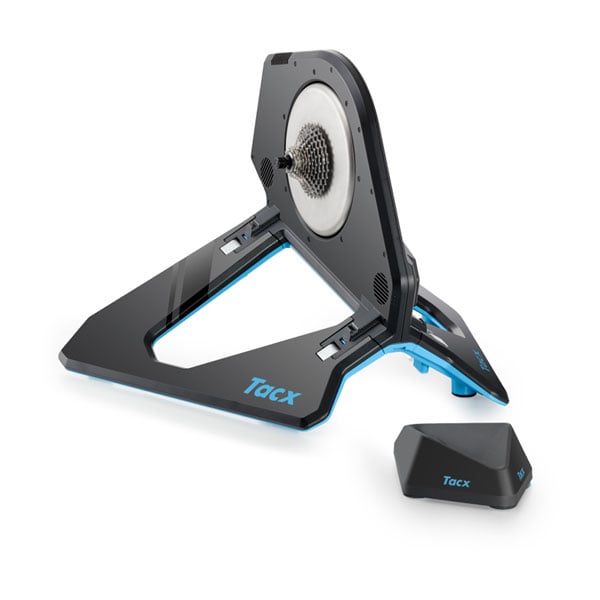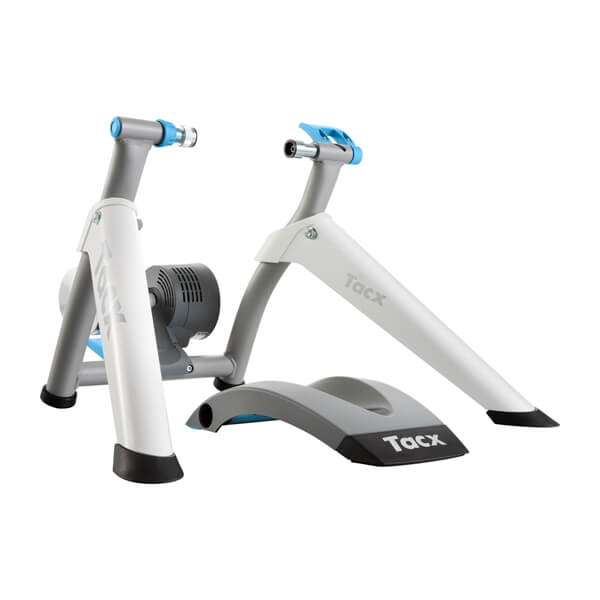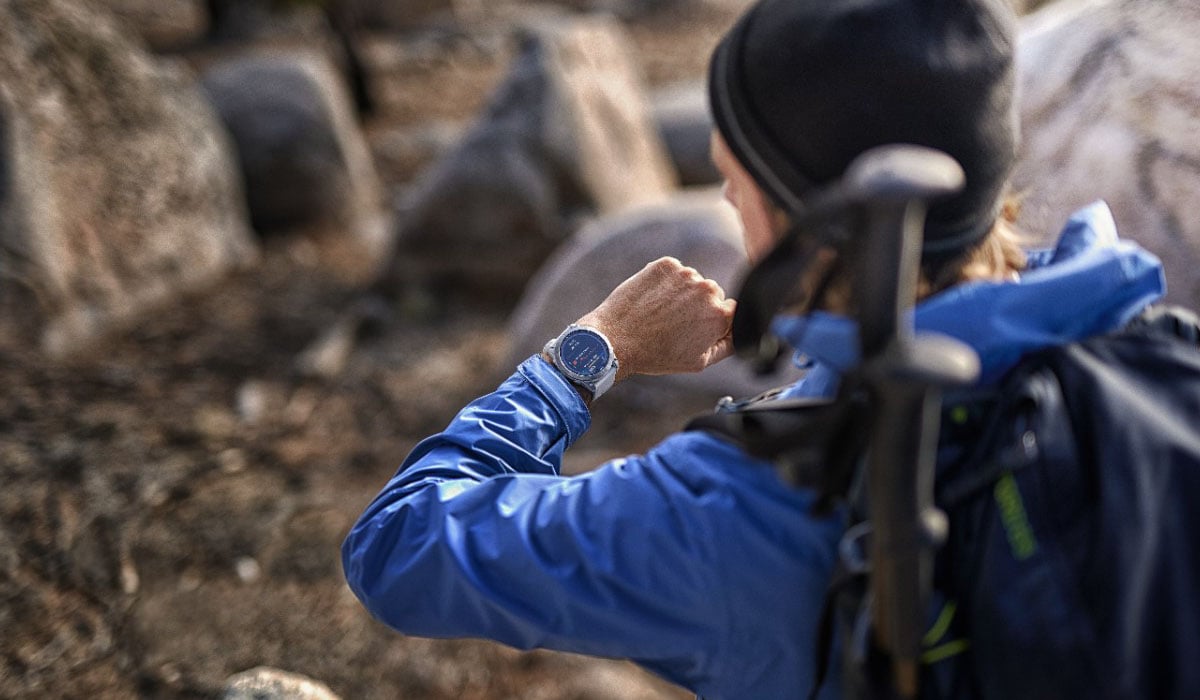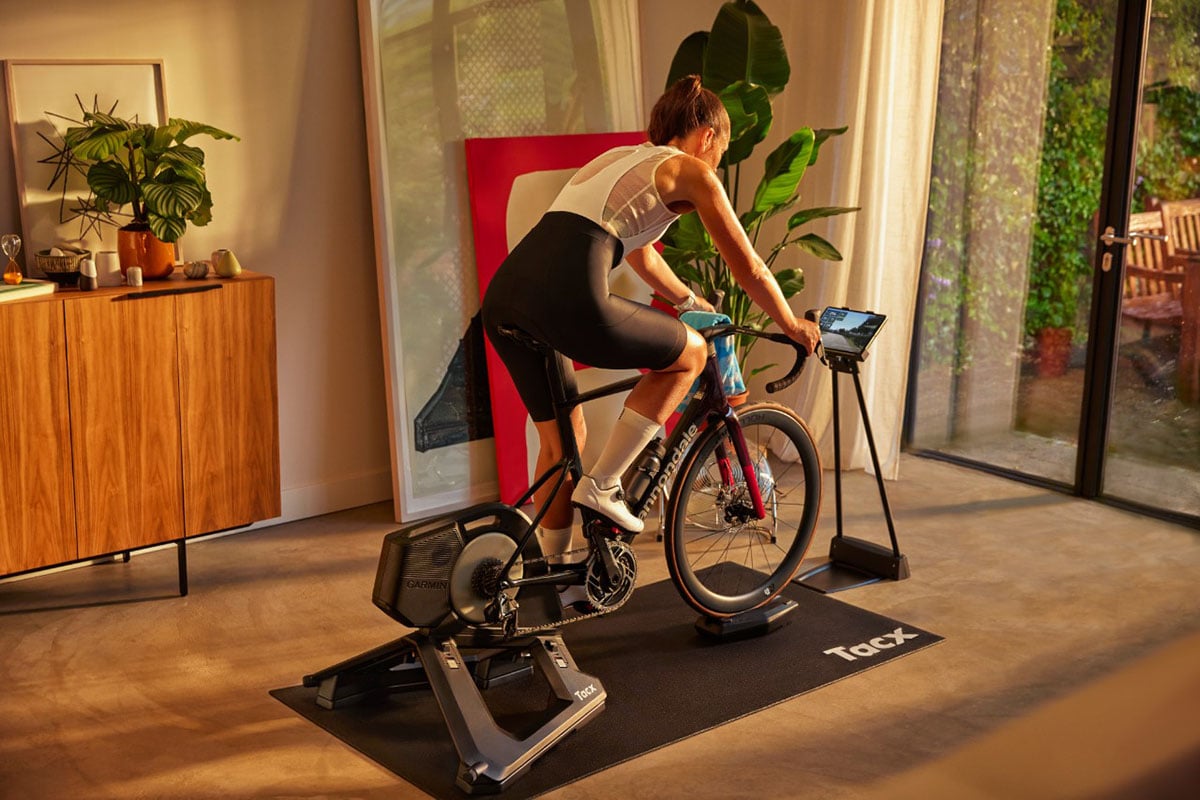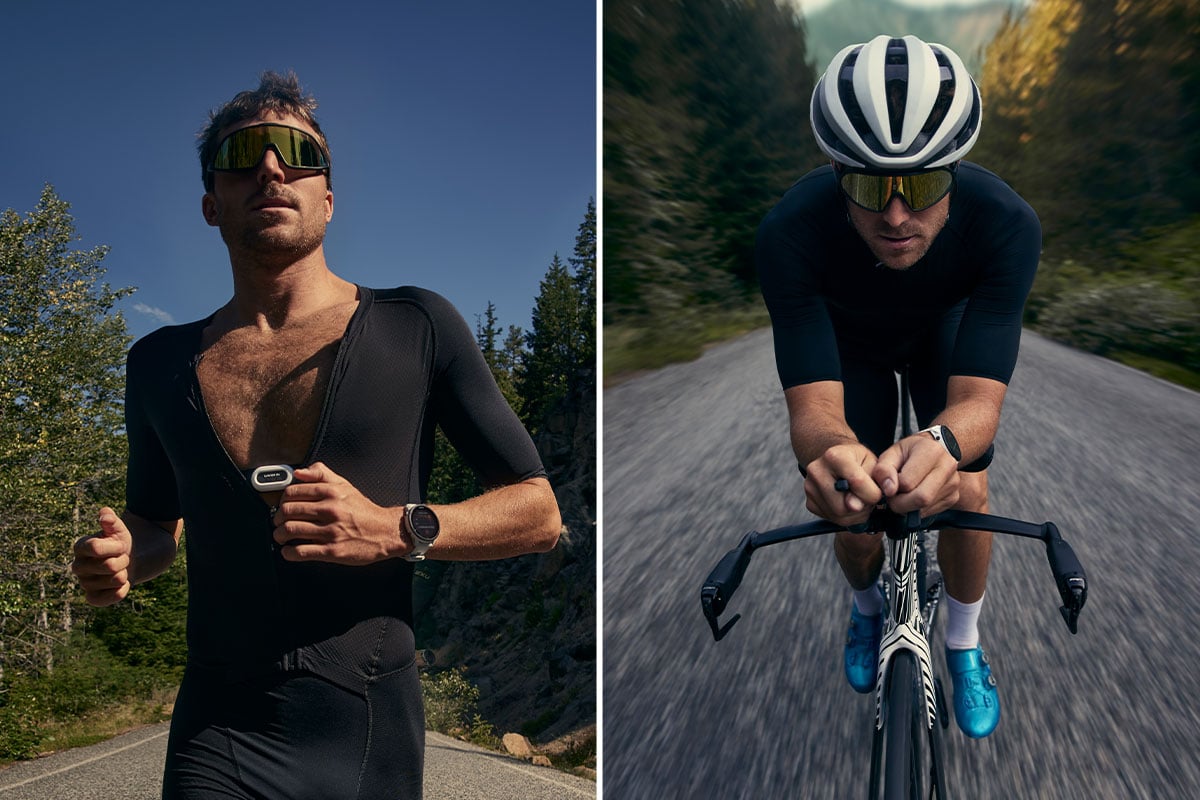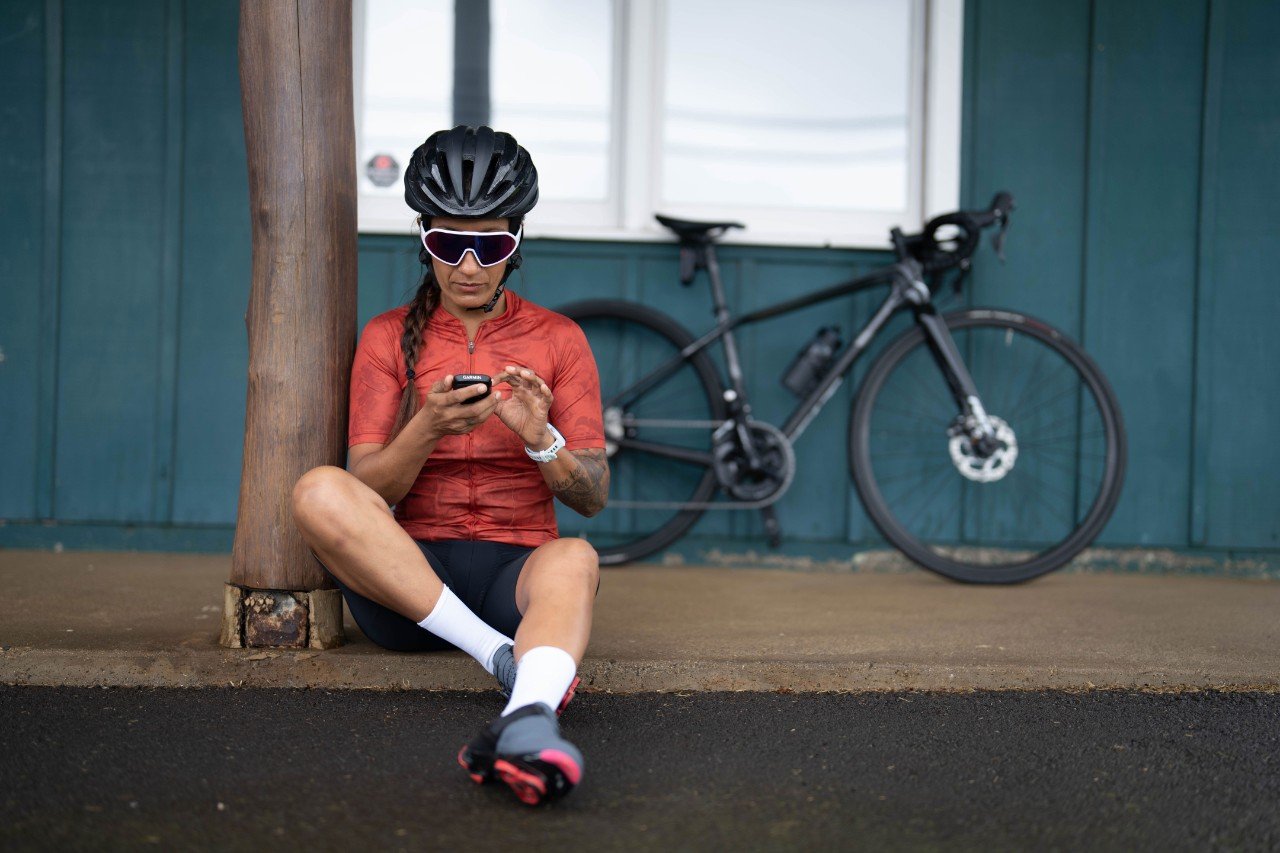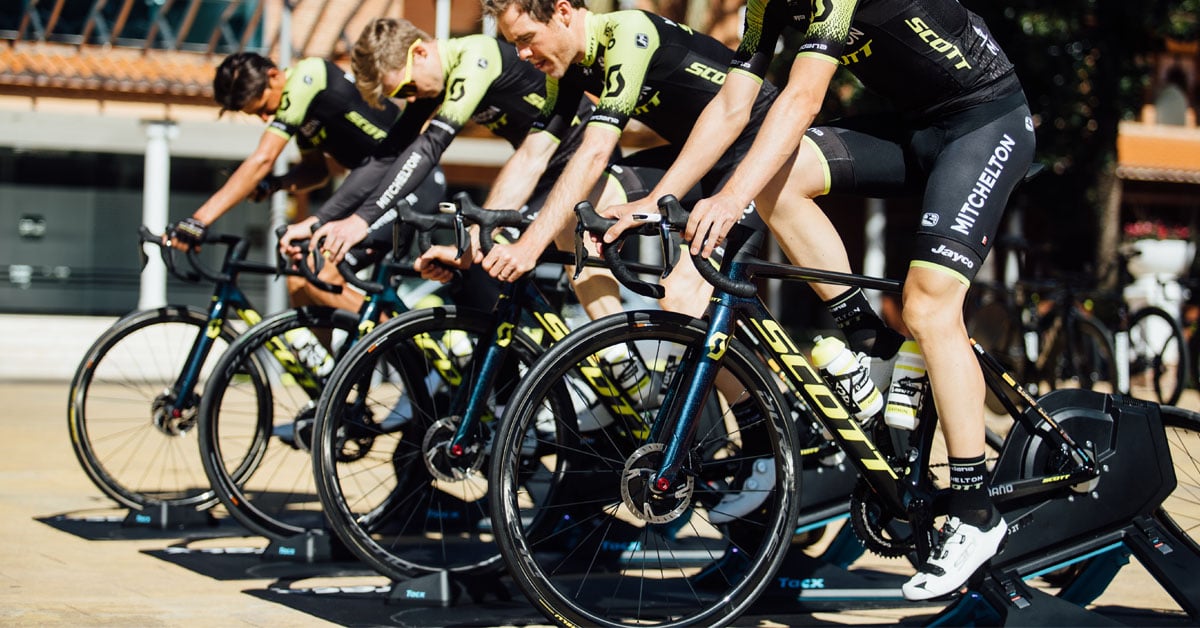
The Right Way to Warm Up for a Cycling Race
If you’ve ever visited the starting area of a cycling time trial, you might have been overwhelmed by the number of stationary trainers. No matter the level of race, you’ll see almost everyone riding their bike without moving an inch. Although warming up has been customary at team time trials, nowadays you see more cyclists warming up before other events as well, and most of them are really working up a sweat. At first sight, it might not make any sense. Why is it necessary to suffer like that before the actual race begins? In this article, we’ll discuss when and how to execute a proper warm-up. But before we can do that, we should talk a little bit about why you should be doing a warm-up.
There are a couple of interesting things happening during a warm-up. First, the body temperature rises, and the blood flow speeds up. With a slightly higher body temperature, oxygen can be better attached and released to the oxygen transport molecules in your blood called hemoglobin. By warming up, more oxygen can reach the muscles. Also, with a higher body temperature, the range of motion of your joints increases. A warmed-up body is slightly more flexible and less stiff.
Why should I warm up?
Another factor that contributes to better performance after a warm-up is that when you start exercising at a higher intensity, the energy supply switches from burning fat to mostly burning carbs. This process implies a rise of the lactate level and is partly anaerobic, which means there is a short oxygen debt until a new steady state is reached. You do not want this oxygen debt to occur in the first minutes of your time trial or race, which is what can occur during a hard start without a warm-up. When you’ve completed a gradual warm-up, it’s much easier to put the hammer down right from the start.
Also, warming up encourages the neuromuscular activation of the muscles, leading to better performance. This process is called the post-activation potentiation (PAP). It means that short bouts of intense physical activity cause a biomechanical change within the muscle cells, which enhances the force of the muscles. This effect lasts for only about 5 to 10 minutes.
Last, but not least, is the effect of getting “in the zone.” Warming up can help get you into the right mindset to perform at your best. That’s why you often see professional cyclists wearing shades, caps and headphones, completely closed off from their surroundings while they warm up.
When is the best time to warm up?
If we take all this into account, we can already answer the “when” question. Because some effects are only short-lived, such as the neuromuscular effect of the PAP, a warm-up should be done right before your start. Ideally, just 5 minutes before the start; however, because those 5 minutes are usually the most stressful moments before a race start, shooting instead for 10 minutes prior to start time is often more realistic.
Keep in mind, even though warmed-up muscles perform better, they also fatigue. So doing a warm-up for too long or making it too intense might be counterproductive. Your body also has limited carbohydrate storage for about 1 to 1.5 hours at FTP intensity. Emptying this storage in a warm-up for an event that takes longer than an hour could negatively affect your performance.
What’s the right way to warm up?
What should be included in a proper warm-up? The exact formula varies from person to person, but it is important to briefly hit all the intensity zones. To provide you with a framework that you can adapt to your own needs, the workout outlined below is a good starting point.
- 5 minutes easy 60–70% FTP
- 8 minutes gradual incline of 5% every minute; so, 75, 80, 85, 90, 95, 100, 105, 110%
- 2 minutes easy 60–65% FTP
- 3 7-second sprints with 53 seconds of rest at 70% FTP in between
- 2 minutes easy 60–70% FTP
And remember, although you do want the muscle temperature to rise slightly, you do not want to overcook yourself while warming up on the trainer. Try to use a fan, especially on hot days, a cool vest and iced drinks, or even consider shortening your warm-up. It’s important to keep your body cool.
By Jim van den Berg, founder of Cyclinglab. Jim has a background in kinesiology and was a semi-pro cyclist.
The information provided through our blog is not intended to be and is not a substitute for professional medical advice, diagnosis or treatment that can be provided by your own health care professional. Garmin makes no attempt to diagnose, treat or cure any physical ailment, or any mental or emotional issue, disease or condition. Our blogs are intended to help you reach your own health and wellness goals.
